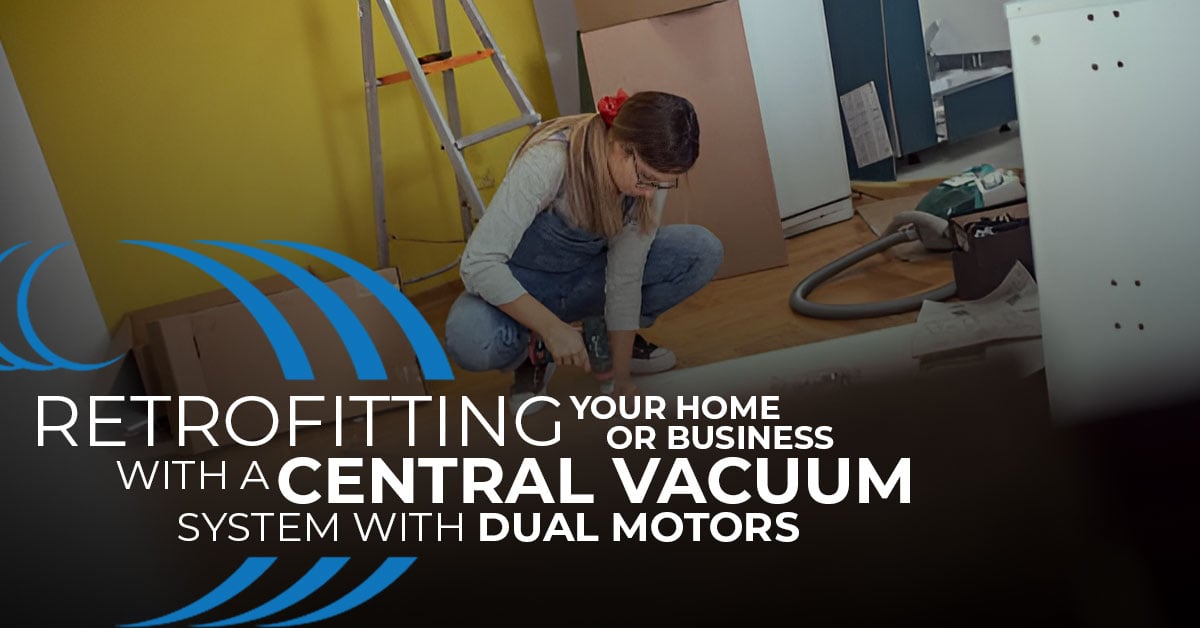
Boosting Productivity in Office Buildings with Central Vacuum
In today’s fast-paced work environment, maintaining a clean and organized office space is crucial for productivity. Office buildings often struggle with keeping their premises clean

The benefits of a central vacuum system are numerous: improved indoor air quality, enhanced cleaning power, and the convenience of not having to lug a heavy unit around your home or business. But what if you’re in an existing building? Is it possible to retrofit with a central vacuum system? And what about dual motor systems? In this article, we’ll explore central vacuum system retrofit, how dual motor central vacuums can benefit both homes and businesses, the process of upgrading to a dual motor vacuum system, the installation of central vacuums in existing buildings, and the benefits of retrofitting with central vacuums.
Contrary to what many people think, it is entirely possible to retrofit an existing home or business with a central vacuum system. The process involves installing PVC tubing in the walls, which connects to a central power unit typically located in a basement, garage, or utility room. Inlets are then installed in convenient locations throughout the building, allowing you to plug in a hose and clean any area with ease.
Dual motor central vacuums offer superior cleaning power, making them an excellent choice for both homes and businesses. For homes, they can effectively remove dust, allergens, and other pollutants, improving indoor air quality. Businesses, particularly those in industries like hospitality or healthcare where cleanliness is paramount, can benefit from the enhanced cleaning capabilities of dual motor systems.
If you already have a central vacuum system and are considering upgrading to a dual motor system, the process is relatively straightforward. In most cases, it simply involves replacing the existing power unit with a dual motor unit. The existing tubing and inlets can typically be used, making the upgrade process relatively quick and cost-effective.
While the installation of a central vacuum system in an existing building is more complex than in new construction, it’s still very much achievable. The process involves running tubing through the walls, attic, or crawl spaces to connect the inlets to the power unit. This requires careful planning to determine the most effective routes and inlet locations. It’s recommended to hire a professional installer to ensure the job is done correctly and minimize disruption to your home or business.
Retrofitting your home or business with a central vacuum system can offer several benefits:
Improved Indoor Air Quality: Central vacuums vent dust and allergens outside the building, helping to improve indoor air quality.
Enhanced Cleaning Power: Dual motor systems provide superior suction power, ensuring a deep and thorough clean.
Noise Reduction: With the power unit located away from the living or working areas, central vacuums are quieter than traditional vacuums.
Increased Property Value: A central vacuum system can add value to your home or business, making it a worthwhile investment.
In conclusion, retrofitting your home or business with a dual motor central vacuum system is not only possible but also highly beneficial. With careful planning and professional installation, you can enjoy the many advantages that these systems offer.

In today’s fast-paced work environment, maintaining a clean and organized office space is crucial for productivity. Office buildings often struggle with keeping their premises clean

Central vacuums in animal shelters & vet clinic: Explore how these systems boost hygiene, efficiency, and air quality.

In the world of home entertainment, a home theater is a luxury that many homeowners dream of. It’s an immersive experience that brings the magic

A central vacuum system is a significant investment that promises convenience, powerful suction, and improved indoor air quality. However, choosing the right central vacuum hose
Our home automation products are at the forefront of technology, offering a blend of convenience, security, and efficiency. As a Homewave dealer, you’ll be part of a network transforming homes into smart, futuristic spaces.
Embark on this rewarding journey with us and leverage the power of innovative technology.
Please fill out this form and become a Homewave Dealer.